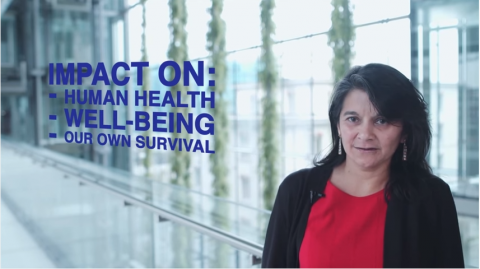
Tackling
Global health challenges
Public health implications of the implementation of the Nagoya Protocol
Public health implications of the implementation of the Nagoya Protocol
The implementation of the principle of Access and Benefit Sharing, as stipulated under the Nagoya Protocol, jeopardizes pandemic preparedness and endangers public health.
National access and benefit sharing measures need to take into account the potential impacts on public health.
The biopharmaceutical industry is supportive of the objectives of the Convention on Biological Diversity (CBD). However, timely access to pathogens with pandemic and epidemic potential must be ensured to keep humanity safe.
Article 8(b) of the Nagoya Protocol indicates that parties must ‘pay due regard’ to public health emergency situations – this provision must be relied upon to ensure that humanity can respond in a timely manner.
Preparing for the next pandemic can’t wait. The implementation of the Nagoya Protocol opened the door to national legislation and policies that make pandemic preparedness harder.
Without access to pathogen samples and their related sequence information, critical medical countermeasures such as vaccines, diagnostics, and therapeutics cannot be developed. In its current state, the Nagoya Protocol risks incentivizing countries to see pathogens as bargaining chips.
The Nagoya Protocol (NP) on Access and Benefit Sharing (ABS) is a legally-binding, supplementary international agreement to the Convention on Biological Diversity (CBD). Its objective is the fair and equitable sharing of benefits arising from the utilization of genetic resources for the conservation and sustainable use of biodiversity.
Under the terms of the NP, genetic resources may be accessed subject to the Prior Informed Consent (PIC) of the country of origin, and once Mutually Agreed Terms (MAT) have been reached that include the “fair and equitable” sharing of the benefits arising from the utilization of the concerned genetic resource. Those PICs and MATs are to be dealt with bilaterally (between user and provider) for each genetic resource.
The NP was drafted with the aim of preserving biological diversity, not blocking global pandemic response. However, the protocol could potentially incentivize countries to withhold access to deadly pathogens needed for research. It has become increasingly urgent to prioritize public health needs and call attention to the ways in which the CBD allows countries to deny scientists – from companies and public research institutions – access to genetic data and physical samples.
Global leaders must prepare for the next pandemic. This will require all nations to make strong political commitments to timely, unrestricted access to pathogens.
Discussions on the CBD consider the inclusion of genetic resource sequence data (GRSD) under the scope of the NP, further jeopardizing epidemic and pandemic preparedness and response. Rapid development of vaccines, therapeutics, and diagnostics are essential to any pandemic response strategy, but we are now all aware that viruses can mutate and become more dangerous. Through genomic sequencing, scientists all over the world can identify, assess risks, and track emerging variants.
IFPMA supports the work of the ICC in discussions related to access and benefits sharing. We do not support the inclusion of so called ‘digital sequence information’ under the NP as this would create significant barriers to scientific progress and would hinder the ability of humanity to rapidly respond to public health emergencies.
Delays in pathogen sample sharing have already occurred for Ebola, Zika, and Influenza – these can have irreversible knock-on effects for public health.
Influenza vaccine production is especially affected by delays in pathogen sharing. But preparing for the next pandemic can’t wait.
Influenza vaccine development is on a strict 6-month schedule, a delay of a few weeks or more could potentially mean that vaccines are not available in time. The COVID pandemic taught us how crucial rapid vaccine development is.
6-9 months
of delay in accessing influenza samples
3,500,000 virus samples tested
through GISRS
20 viruses selected
for candidate vaccine viruses













